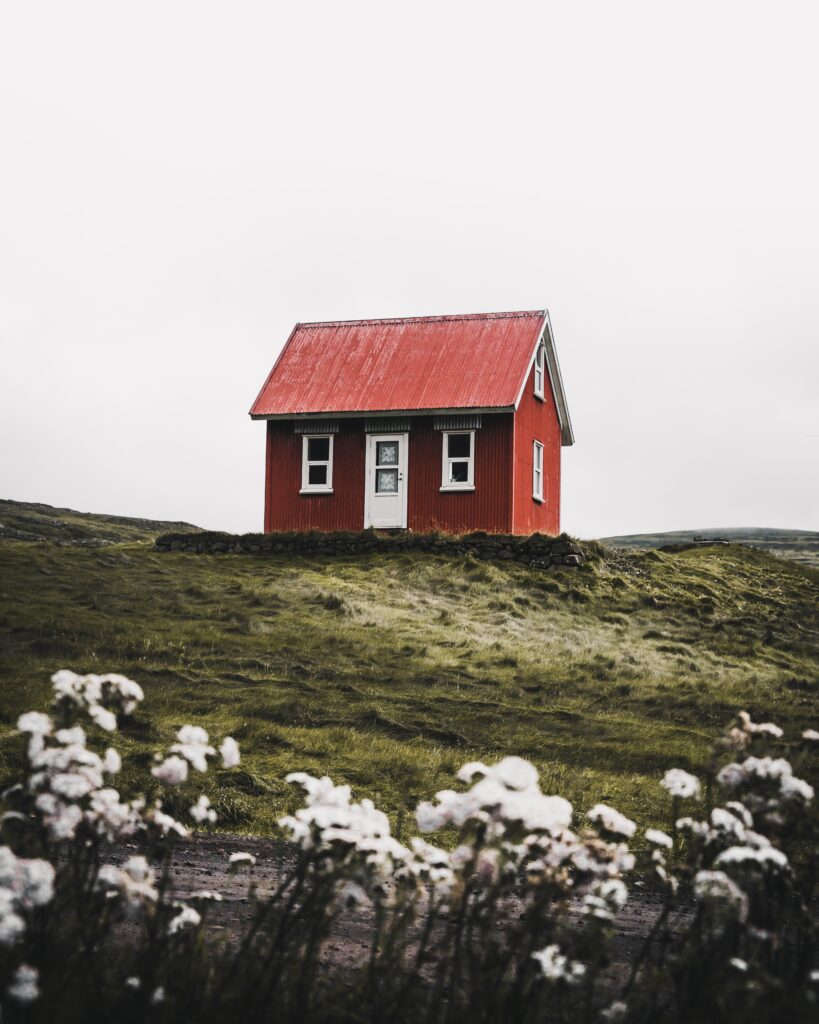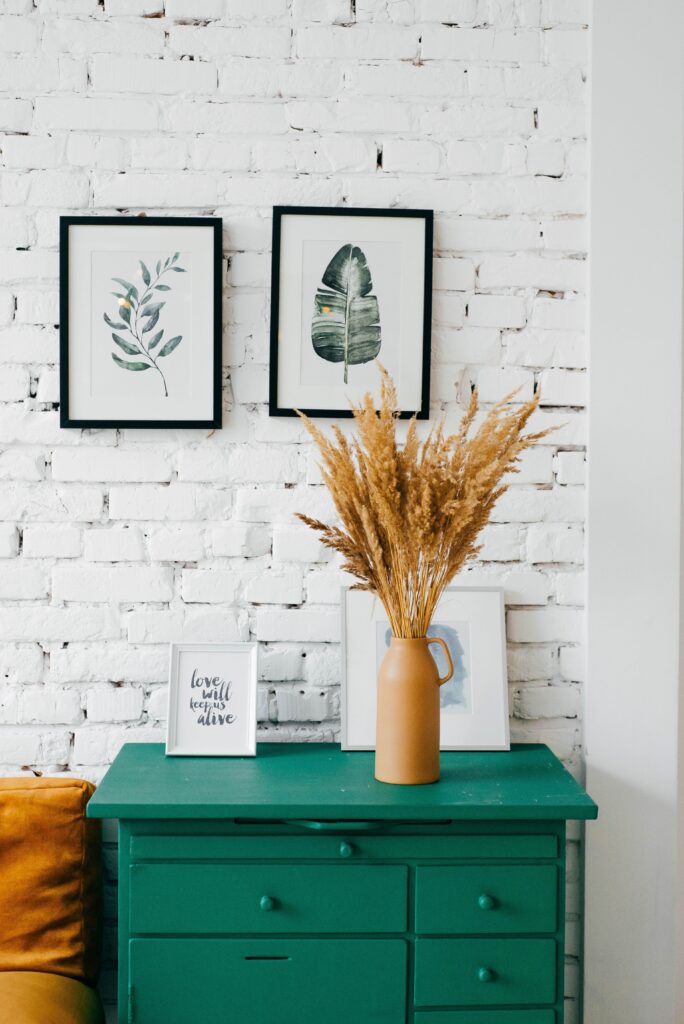I have always been fascinated by how the design of a space can reflect one’s personality and artistic expression. In the world of tiny homes, where space is limited, the challenge becomes even greater. However, it is exactly this limitation that fuels the creativity of homeowners, enabling them to infuse their unique artistic flair into every inch of their abode. From ingenious storage solutions to clever furniture arrangements, tiny home design has become an art form in itself, showcasing the individuality and imagination of its inhabitants. Join me as we explore the incredible world of tiny home design and discover the ways in which people are expressing their artistic personalities in these small, yet truly remarkable, spaces.



This image is property of images.unsplash.com.
1. Space Optimization
Living in a tiny home doesn’t mean sacrificing style or function. With some clever strategies, you can optimize the limited space and create a comfortable and artistic environment. Here are some tips to make the most out of your tiny home’s space.
1.1. Utilizing Multifunctional Furniture
One of the keys to space optimization is using multifunctional furniture. Look for pieces that serve more than one purpose, such as a sofa that can convert into a bed or a coffee table with hidden storage compartments. This way, you can maximize the functionality of each item while minimizing the space they occupy.
1.2. Maximizing Vertical Space
In a tiny home, every inch counts, and that includes the vertical space. Take advantage of the height of your walls by installing floating shelves or using tall bookcases to store your belongings. Wall-mounted furniture, such as foldable tables or drop-down desks, can also be great space-saving solutions.
1.3. Creative Storage Solutions
Storage is often a challenge in small spaces, but with some creativity, you can find unique solutions. Consider using under-bed storage boxes, hanging organizers, or installing hooks on the walls to hang items like pots and pans. Utilize every nook and cranny, including the space above cabinets or below stairs, to create additional storage opportunities.
2. Color and Texture
Adding color and texture to your tiny home can make a significant impact on its overall aesthetic. Here are some ideas for creating visual interest in small spaces.
2.1. Creating Visual Interest with Colors
Choose colors that reflect your personal style and create the desired atmosphere. Lighter shades like pastels or neutrals can make a space feel more open and airy, while bolder colors can add personality and vibrancy. Consider using accent walls or painting ceilings to create visual interest and make your tiny home feel more dynamic.
2.2. Incorporating Textures for Depth
Textures can enhance the visual appeal of your tiny home and add depth to the overall design. Mix different textures, such as smooth fabrics, rough wood, or glossy surfaces, to create an interesting contrast. Incorporate textures through throw pillows, rugs, curtains, or textured wallpaper to make your small space feel cozy and inviting.
2.3. Playing with Patterns
Patterns can be used strategically to create visual illusions in small spaces. Opt for smaller-scale patterns that won’t overwhelm the room, such as stripes, geometric shapes, or small floral prints. Mix and match patterns sparingly to add visual interest without making the space feel cluttered.



This image is property of images.unsplash.com.
3. Lighting
Proper lighting is crucial in a tiny home to create a welcoming atmosphere and make the space feel larger. Here are some strategies to optimize lighting in your small space.
3.1. Natural Light Strategies
Make the most of the natural light available in your tiny home by keeping windows clear and unobstructed. Use sheer curtains or blinds that allow light to filter through while still providing privacy. Consider installing skylights or adding mirrors strategically to reflect and amplify natural light.
3.2. Artificial Lighting Techniques
To supplement natural light, incorporate artificial lighting sources that are functional and aesthetically pleasing. Use a combination of overhead lighting, such as recessed or track lights, and task lighting, such as desk lamps or under-cabinet lights. Remember to carefully position lighting fixtures to avoid casting shadows or creating harsh lighting.
3.3. Accent Lighting Ideas
Accent lighting can add a cozy and intimate ambiance to your tiny home. Consider incorporating LED strip lights under floating shelves or along staircases to create a soft, warm glow. Use wall sconces or pendant lights as focal points to highlight artwork or specific areas in your space. Dimmer switches can also provide flexibility in adjusting the lighting levels according to your needs.
4. Artwork and Decor
Artwork and decor are essential elements in expressing your personality and adding character to your tiny home. Here are some ideas on how to incorporate art and decor while maximizing space.
4.1. Choosing Art Pieces for Small Spaces
When selecting artwork for your tiny home, consider the scale and proportion of the pieces. Opt for smaller-sized artwork that won’t overpower the walls or take up too much space. A gallery wall can be a great way to display multiple small art pieces together, creating a focal point without overwhelming the room.
4.2. Displaying Collections in a Compact Manner
If you have a collection of items, find creative ways to display them without cluttering your tiny home. Consider using shadow boxes or wall-mounted shelves to showcase your collection while keeping them organized and visually appealing. Rotate your displays periodically to keep your space feeling fresh and avoid visual monotony.
4.3. DIY Decor Ideas
Embrace your artistic side and create your own decor pieces for your tiny home. DIY projects can be a fun and cost-effective way to personalize your space. Paint your own canvas, make your own macrame wall hanging, or repurpose items into unique decorations. Not only will these DIY decor pieces add a personal touch, but they can also often be customized to perfectly fit your small space.



This image is property of images.unsplash.com.
5. Furniture Placement
The placement of furniture plays a crucial role in optimizing the flow and functionality of a tiny home. Here are some tips for arranging furniture in small spaces.
5.1. Arranging Furniture for Flow and Function
Consider the traffic flow in your tiny home when arranging furniture. Leave enough space for comfortable movement between furniture pieces and ensure that doorways and pathways are clear. Place larger furniture items against walls to maximize the central floor space. Opt for furniture with exposed legs to create a more open and spacious feel in the room.
5.2. Spatial Dividers for Privacy
In small spaces where privacy is essential, consider using spatial dividers to separate different areas. Utilize folding screens, curtains, or bookshelves as dividers that can be easily adjusted or moved when needed. This allows you to create distinct zones within your tiny home without sacrificing openness and flexibility.
5.3. Minimalist and Functional Furniture
Choose furniture that is both minimalist and functional to optimize space in your tiny home. Look for pieces that have storage compartments, hidden features, or can serve multiple purposes. For example, opt for a sofa that can convert into a bed or a dining table that can fold down when not in use. This way, you can maximize the functionality of your furniture while minimizing the space they occupy.
6. Reflective Surfaces
Incorporating reflective surfaces into your tiny home can create the illusion of more space and light. Here are some ideas for using mirrors and metallic accents.
6.1. Mirrors to Create Illusion of Space
Mirrors are an excellent tool for visually expanding a small space. Place mirrors strategically across from windows or in areas with limited natural light to reflect light and create a sense of openness. Consider using large wall mirrors or mirrored furniture, such as a mirrored coffee table or console table, to maximize the reflective effect.
6.2. Incorporating Glass and Metallic Accents
In addition to mirrors, incorporating glass and metallic accents can also create a visually appealing and reflective effect. Choose furniture or accessories with glass tops, such as a glass dining table or glass shelves, to create a sense of transparency and lightness. Incorporate metallic accents through light fixtures, decorative accessories, or furniture legs to add a touch of sophistication and reflectiveness to your tiny home.
7. Greenery and Natural Elements
Introducing greenery and natural elements into your tiny home can bring freshness and aesthetics to your space, connecting you with nature even in a limited environment. Here are some ideas to incorporate greenery and natural elements.
7.1. Indoor Plants for Freshness and Aesthetics
Indoor plants are not only visually appealing but also have numerous benefits, such as improving air quality and creating a calming atmosphere. Choose low-maintenance plants, such as succulents or snake plants, that thrive in indoor environments and require minimal care. Hang plants from the ceiling, place them on windowsills, or create a vertical garden to maximize space utilization.
7.2. Integrating Natural Materials and Textures
In addition to plants, consider integrating natural materials and textures into your tiny home’s design. Choose furniture and decor made from materials like wood, rattan, or jute to add warmth and a natural feel to your space. Incorporate natural textures through cushions, rugs, or wall hangings made from natural fibers like cotton or wool. These natural elements will bring a sense of organic beauty and harmony to your tiny home.
8. Personal Touches
Adding personal touches to your tiny home is essential in creating an environment that truly reflects your personality and interests. Here are some ideas to make your space uniquely yours.
8.1. Customized Artwork and Installations
Create customized artwork and installations that speak to your personal style and interests. Paint a mural on one of your walls, create a gallery of your own photographs, or design and build an installation that showcases your passion. These customized elements will make your tiny home feel truly personalized and unique.
8.2. Showcasing Hobbies and Interests
Your tiny home is an extension of yourself, so don’t be shy about showcasing your hobbies and interests. Dedicate a space to display your musical instruments, organize a shelf with your favorite books or vinyl records, or create a small corner for your yoga practice. Incorporating elements that represent your passions will make your tiny home feel like a reflection of your true self.
9. Open Floor Plan Concepts
Open floor plans can create a sense of spaciousness and fluidity in small spaces. Here are some ideas for seamlessly combining living spaces in your tiny home.
9.1. Seamlessly Combining Living Spaces
In a tiny home, it’s essential to maximize the functionality of every inch of space. Consider combining your living, dining, and kitchen areas into an open floor plan. This not only creates a more spacious feel but also allows for easier flow and interaction between different zones. Use furniture placement, lighting, and color coordination to visually separate the areas while maintaining a cohesive and connected overall design.
9.2. Creating Zones within a Tiny Home
Although open floor plans can create a sense of unity, it’s still essential to create distinct zones within your tiny home. Define separate areas using furniture arrangements, rugs, or subtle changes in wall color. For example, use a large rug to anchor your living room area or install pendant lights to delineate your dining space. These subtle visual cues will help create a sense of organization and purpose within your open floor plan.
10. Outdoor Living
Expanding your living space outdoors can be a game-changer in a tiny home. Here are some ideas to create cozy nooks and relaxation areas outside your tiny home.
10.1. Expanding Living Space Outdoors
Make use of any available outdoor space to extend your living area. Set up a comfortable seating area on a patio or create a cozy reading nook on a balcony. Utilize vertical space by installing hanging planters or a wall-mounted herb garden. Creating an outdoor extension of your tiny home not only increases your living space but also provides an opportunity to connect with nature and enjoy the fresh air.
10.2. Cozy Nooks and Relaxation Areas
Designate specific areas outside your tiny home for relaxation or recreation. Create a small outdoor lounge space with comfortable seating and ambient lighting. Set up a hammock or a swinging chair for a cozy reading spot. Build a tiny garden oasis with potted plants and a small water feature for a peaceful retreat. These cozy outdoor nooks will provide you with a tranquil escape just steps away from your tiny home.
In conclusion, designing a tiny home with artistic flair is achievable even within limited spaces. By implementing space optimization techniques, considering color and texture, utilizing proper lighting, incorporating art and decor, strategically placing furniture, incorporating reflective surfaces, integrating greenery and natural elements, adding personal touches, embracing open floor plan concepts, and expanding living space outdoors, you can create a small and artistic abode that perfectly reflects your personality. Remember, the key is to think creatively, be intentional with your design choices, and make the most out of every inch of your tiny home.
